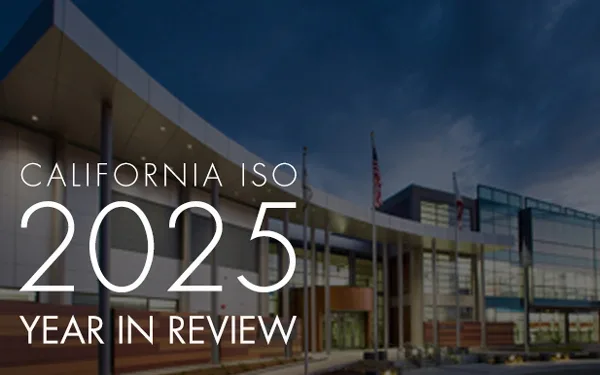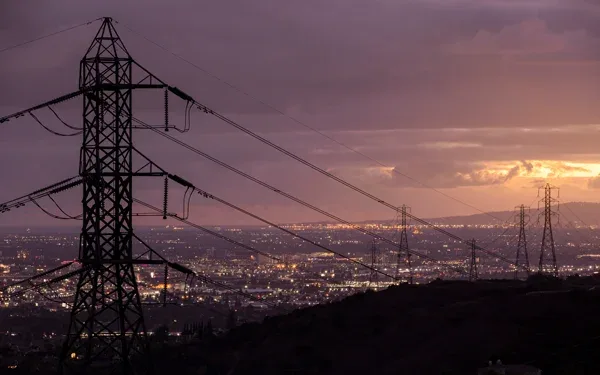Taking steps to bend the cost curve while enhancing reliability

When it comes to expanding capacity on the grid, delays and inefficiencies can undermine reliability and lead to higher costs, which is why the California Independent System Operator (ISO) works hard to remove barriers that impede progress and the smooth operation of the system. Thanks to the dedication of our staff and collaboration with government and industry partners, we have achieved some notable successes.
As a non-profit public benefit corporation, the ISO’s primary mission is to manage the electrical grid and support reliability. At the same time, we are deeply committed to doing all we can to help bend the cost curve for consumers in the right direction. Every step we take to enhance overall system efficiency translates to improved reliability and savings for everyone.
Over the past several years, the pace for bringing new resources online to meet California policy objectives has accelerated and the ISO has been working to reduce what I refer to as “friction” on the grid in a number of different ways:
- Reforming our interconnection process so it’s more nimble, allowing new generating capacity to be onboarded more quickly and efficiently;
- Making sure the ISO’s annual transmission plans explore a wide variety of possible solutions before recommending the most cost-effective options possible, including grid-enhancing technologies that can – where applicable – increase capacity for a fraction of the cost of new lines;
- Coordinating closely with our partners in state government, most notably the California Public Utilities Commission (CPUC) and California Energy Commission (CEC), so our distinct roles in planning, building and operating the transmission grid are in sync and not working at cross purposes, which can cause delays that run up costs; and,
- Expanding our wholesale electricity markets, which have already saved nearly $7 billion for participants and their customers by sharing diverse, least-cost resources and delivering power on an increasingly interconnected Western transmission network.
Interconnection process reforms
On Sept. 30, 2024, the Federal Energy Regulatory Commission approved a comprehensive suite of reforms to the ISO’s interconnection queue process. Our infrastructure team worked on the reforms for more than a year with a wide range of stakeholders.
The accelerated pace of new resource development was driving significant competition, leading to unprecedented amounts of interconnection requests. Our interconnections process, which had been designed to onboard more moderate amounts of new resources over the past decade, was overwhelmed. We needed to pause and work with stakeholders to find a better way.
The goal is to ensure reliability and expedite the onboarding of new resources needed to achieve the policy goal of a carbon-free grid by 2045. Through coordination with the CPUC, CEC and utilities, we have synchronized our various responsibilities so resource procurement and connections can take advantage of existing or planned transmission and interconnection capacity and are aligned with transmission upgrades necessary for longer-term resource development. Such strategic collaboration minimizes delays and reduces costs for everyone.
We have also been working with the utilities to better streamline the studies required for interconnection. We have invested in new software technology and are looking for potential applications of artificial intelligence to help with the detailed analysis of interconnection applications.
To ensure infrastructure projects align with future needs, transmission must be a leading indicator, not a reactive process. Since transmission takes a long time to site, finance, approve and build, it should guide procurement and queuing rather than lag behind, as it had been before the reforms.
Prioritizing the analysis of interconnection projects that are proximate to existing or planned transmission creates significant financial savings for consumers and resource developers.
Transmission planning process
We understand that it takes significant investment to keep pace with future energy and transmission needs. We work closely with the CPUC, CEC and local regulatory authorities on our annual and longer-term transmission planning. The ISO’s draft 2024-2025 transmission plan recommends the least-cost options including 31 transmission upgrades costing an estimated $4.8 billion at full buildout as well as projects to increase capacity without building new transmission lines.
This year’s plan recommends a number of reliability-driven transmission upgrades that would be accomplished using grid-enhancing technologies—in this case, advanced conductors—to achieve required capacity ratings in the most cost-effective way possible. The plan is scheduled for review and a vote at the ISO’s Board of Governors May meeting.
As the plan states: “The ISO also conducted detailed evaluations of alternatives to ensure achievement of the most efficient and cost-effective long-term solutions. The infrastructure investments also have tremendous reliability and economic benefits for California and the transmission upgrades are required to cost-effectively bring reliable decarbonized power to California consumers and industry across all seasons of the year.”
Close state coordination
Strong communication and collaboration can help even the most complex systems function more smoothly. This is certainly true in managing the grid.
In December 2022, the ISO signed a Memorandum of Understanding with the CPUC and CEC to make sure our various roles in transmission and generation planning, resource procurement and the interconnections process are in sync. As my state colleagues and I wrote in an Energy Matters Blog shortly after the agreement was signed: “With so much new clean power being added to the system, close collaboration and proactive planning between the CPUC, CEC, and ISO are essential for maximum efficiency, reliability and the timely integration of new resources.”
Expanding integrated Western electricity markets
One of the five strategic objectives in the ISO’s 2022-2026 Strategic Plan is to “build on the foundation of the Western Energy Imbalance Market (WEIM) to further expand Western market opportunities.” Since its launch in 2014, market participants across the West have gained substantial reliability, economic, and environmental advantages by trading energy supply and demand across a large geographic area in real time. The WEIM now has 21 market participants outside of the ISO, spanning 11 states.
By leveraging transmission connectivity that exists between California and much of the West, we have moved least-cost energy resources around the region, saving nearly $7 billion for market participants and their customers.
The market also creates operational savings from reduced need for reserve energy and improves situational awareness supporting reliability. Energy demand peaks vary for individual balancing areas across the Western footprint, and the day-ahead market that launches next spring will efficiently commit diverse supply to meet peak needs across an expanded area, producing additional savings for participants and the public.
As I mentioned at the start of this post, reliability is our primary goal. Everything we do at the ISO is aimed at keeping the power flowing on a grid that drives one of the most dynamic economies in the world. By removing obstacles from the process and creating greater efficiencies, we are taking steps to bend the cost curve and helping to achieve a grid that is planned, built and managed as cost-effectively as possible.


